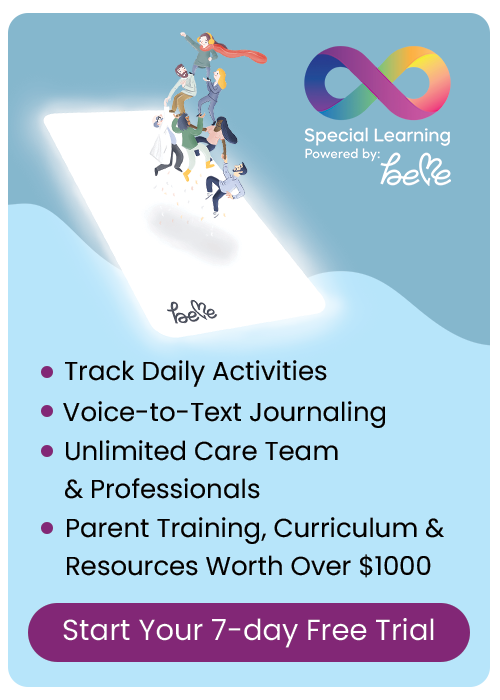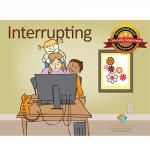Blog Categories
- ADHD
- Applied Behavior Analysis
- Autism Awareness
- Autism Service Providers
- Case Studies
- Dignosis
- Classroom Management
- Credentials
- Ethics
- Family Matters
- FAQs About LIVE Events
- Financial Planning
- Holiday Planning
- IEP's
- Panelists
- Private Equity in Autism & ABA Industry
- Psychopharmacology
- Sensory Processing Disorder
- Speech and Communication
- Subject Matter Experts
- Summer Planning
- Transition Planning
5 Ways to Increase Spontaneous Communication with Your Child
a non-profit treatment center for children with Autism Spectrum Disorder (ASD). As a clinic transition director she directs the treatment plans of multiple clients through management, training and supervision of clinical staff. Before her involvement with SBSA she worked as an Intervention Specialist in Applied Behavioral Services, where she was responsible in the implementation of treatment of multiple clients and their families through teaching and training in the classroom and home environments. Her extensive experience in the field of Behavior Analysis allowed her to successfully conduct presentations, workshops and conferences on topics: PECS for Parents: learning and using the first 3 phases of PECS with your child in the home; Implementing Direct Instruction Curricula with Learners with Autism Spectrum Disorders; Differentiated Instruction; and Introduction to Applied Behavior Analysis. Miranda is from Columbus, Ohio. She earned her Bachelor of Science in Mild-Moderate Special Education at Xavier University, Cincinnati, OH, completed a graduate coursework in Behavior Analysis in the University of North Texas, Denton TX; and she is anticipating the completion of her Masters of Education in Cognitive and Behavioral Disabilities at the Nova Southeastern University in Fort Lauderdale, FL, in August 2012. Miranda is affiliated with the Association for Applied Behavior Analysis International; Ohio Association of Behavior Analysts; Council for Exceptional Children; and Association for Direct Instruction.
5 Ways to Increase Spontaneous Communication with Your Child
Is your child able to communicate but you want them to communicate more? Do you find yourself always having to ask your child what they want? The 5 strategies below will help you.
Begin by making a list of the things your child already asks for. Then add to your list the things your child likes to play with but doesn’t always ask for.
Look over the list and think about where your child is when they play/use/do the things on the list. The 5 strategies below can be used in different environments but some will be better in some than others.
1. Put things in clear containers
Putting things in clear containers that your child cannot unlock shows them that the items are available but they need to ask for the items. Any type of container with a lid works great, use left-over containers with twist-off or snap tops to make it more difficult to open. You can also put larger toys in clear storage containers. By putting items in containers you can work on several different types of request: pointing to the item, asking for the item, for help or for actions by having them ask you to open the box for them.
2. Put preferred activities up out of reach on shelves
This is similar to above, the preferred items are still visible but out of reach. This works great with movies and toys especially that are a little bigger and easier to see from higher up. The top shelf of a toy or coat closet works great for this, so does a high shelf around a bedroom or play room.
If your child likes to climb, be careful to not put things on the top of bookshelves so they don’t climb and could hurt themselves. By putting things up high, you can work on several different types of requests, pointing to the item, asking for the item, asking for help or asking for actions “pick me up” or “get the (toy)”
3. Instead of giving all of something, give just one, or a few at a time
When your child does ask for things, you can increase their requesting by giving them part of what they have asked for. By giving only part or some of what they asked for you honor their requ4st and encourage them to ask more by giving them what they want the first time they ask, but you keep their motivation to ask for more by not giving them too much.
For example, if they like to draw, give them paper but keep crayons, markers, pencils etc. so they have to ask for them. Or with drawing you could give them one marker and hang onto the rest working on requesting using adjectives/colors along with the word crayon and marker.
With items that disappear with use like food items and bubbles this method works very well. After blowing bubbles, put the wand away and set the bottle down and wait/prompt your child to ask for more bubbles, blow bubbles, open the bubble etc. With food items, you can keep the container or a larger bowl of the item and place a few on the child’s plate/bowl.
If you are playing outside, give a few pushes on the swing to get them going then stop and watch and wait.
4. Give your child easy access to part of something
This strategy can be used with things that you don’t want to or can’t completely keep from your child from, like the TV or computer or if they like to draw and there is always paper OR pens around. If your child can easily get to something that you can’t put away, put away part of it on a shelf, in a container or just plain hide it out of sight.
If your child likes to play with toys during a bath, get the bath ready but don’t have the toys out/in the tub waiting for your child. If your child likes specific computer games that require a CD, don’t keep the CDs where they can be reached independently.
This is also a great strategy to start teaching children to request things that aren’t in sight.
When your child starts to play with the activity, they’ll find that something is missing and need to ask for it.
Some examples are below:
At meal times, give your child their food, but not a fork or spoon.
Give your child a portable DVD player with no DVD in it.
Give Play-Doh but no tools
5. Block Access
This last strategy can be used anywhere, with any activity, item or person. This is best for situations where it is not possible to use any of the other strategies (think your child wants to just watch TV and can use the remote/buttons on the TV and doesn’t need anything else) or for something new that your child is interested in. It can also be used when visiting friends and family who don’t have their house set up to encourage communication.
If you know what your child wants, block access to it by holding it, putting your body in front of it and wait and prompt your child to request.
Now that you’ve read these 5 strategies, look back at the list you made and think about which activities, items, and environments you can use these strategies to encourage spontaneous requesting.
RECOMMENDED PRODUCTS
Adolescence and Transition Bundle
Interrupting Social Story Curriculum





